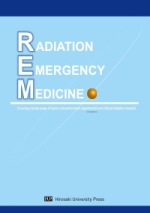Radiation-induced Cell Death and its Mechanisms
View article content
Takashi Kondo
Department of Radiological Sciences, Graduate School of Medicine and Pharmaceutical Sciences, University of Toyama
- Abstract
Elucidation of the molecular mechanisms of cell killing induced by ionizing radiation is a main topic in the field of radiation biology. Radiation-induced cell death has been classified as interphase death estimated by vital cell counting, and reproductive death estimated by colony forming assay. Recently, many modes of cell death, such as apoptosis, autophagy, mitotic catastrophe, Senescencelike cell death, etc. have been reported. In this review, 1) classification of modes of cell death induced by ionizing radiation, 2) radiation-induced apoptosis and its molecular mechanism, 3) significance of radiation-induced cell death are summarized. Discussion on radiation-induced cell death will also focus on radiation-induced normal tissue damage and strategies in radiation cancer therapy.



